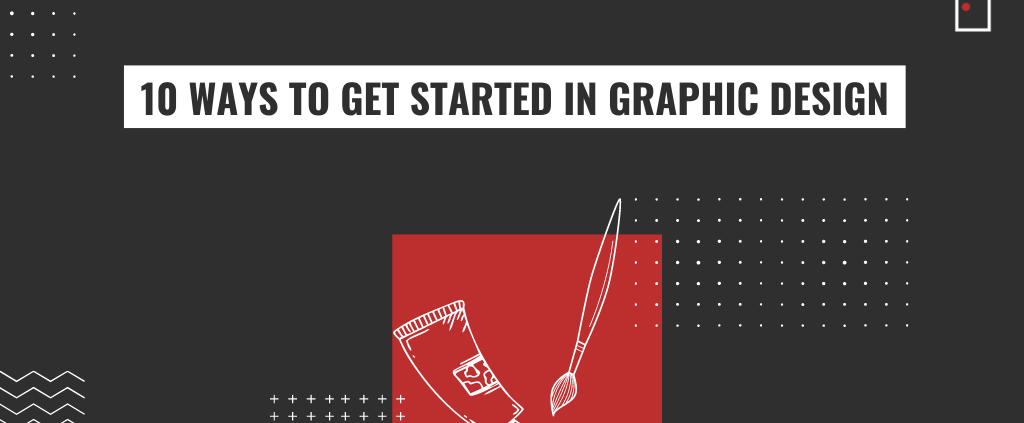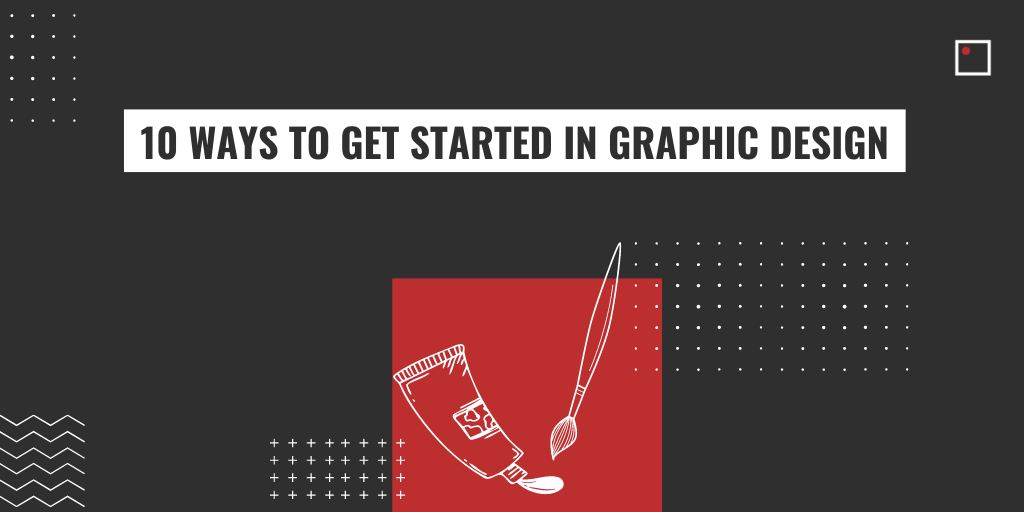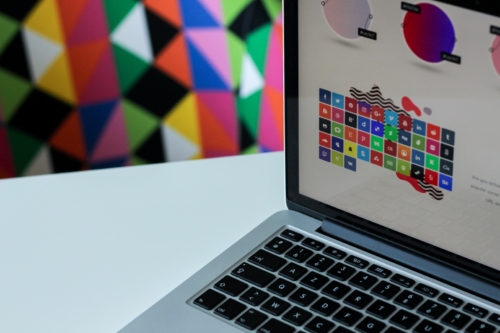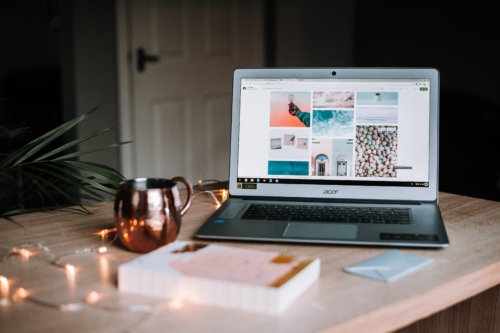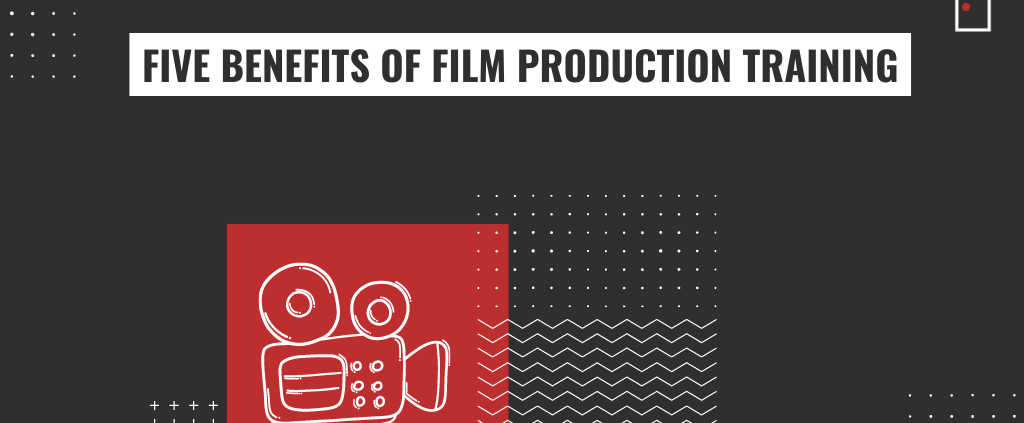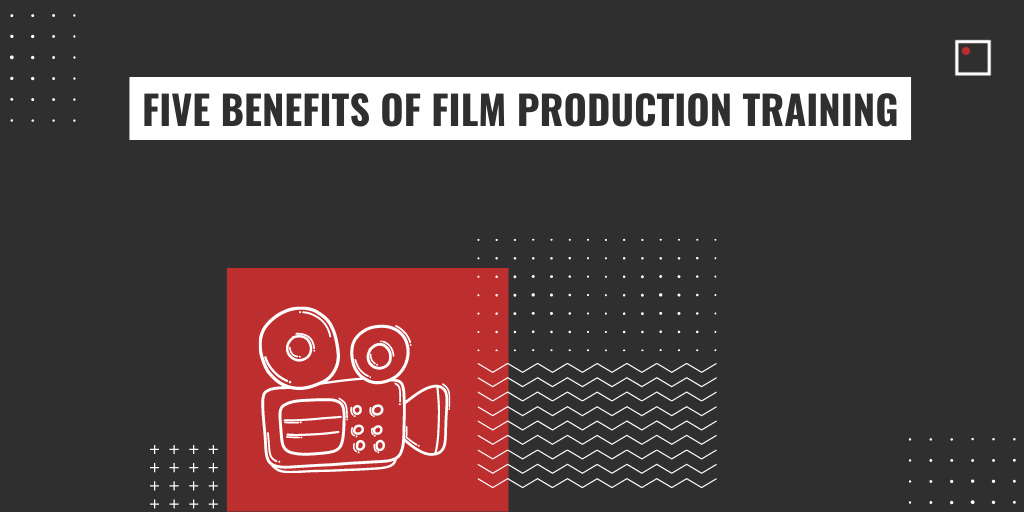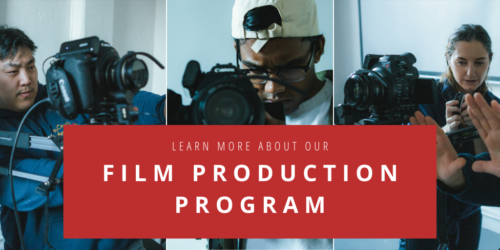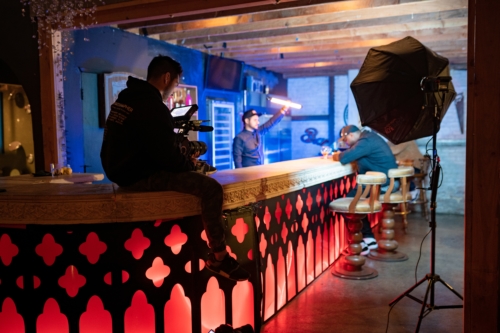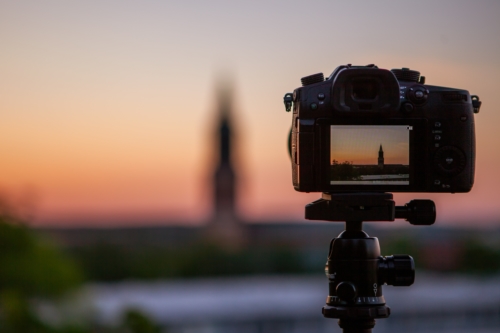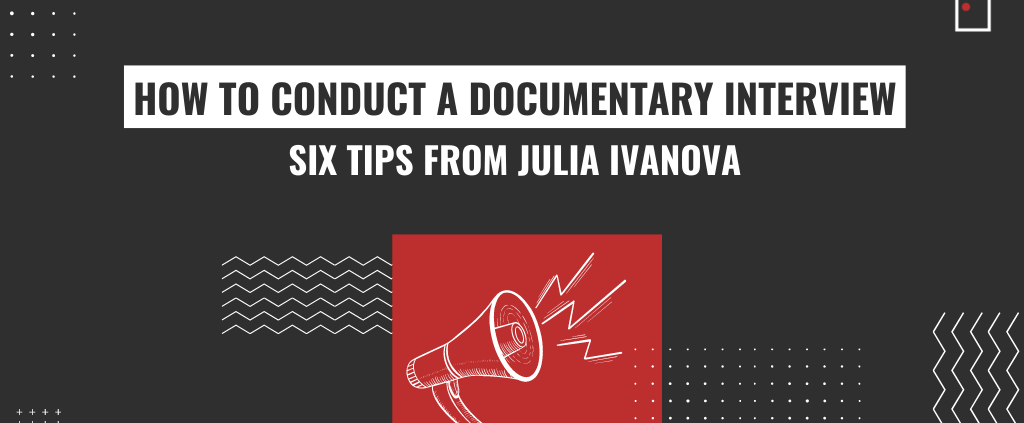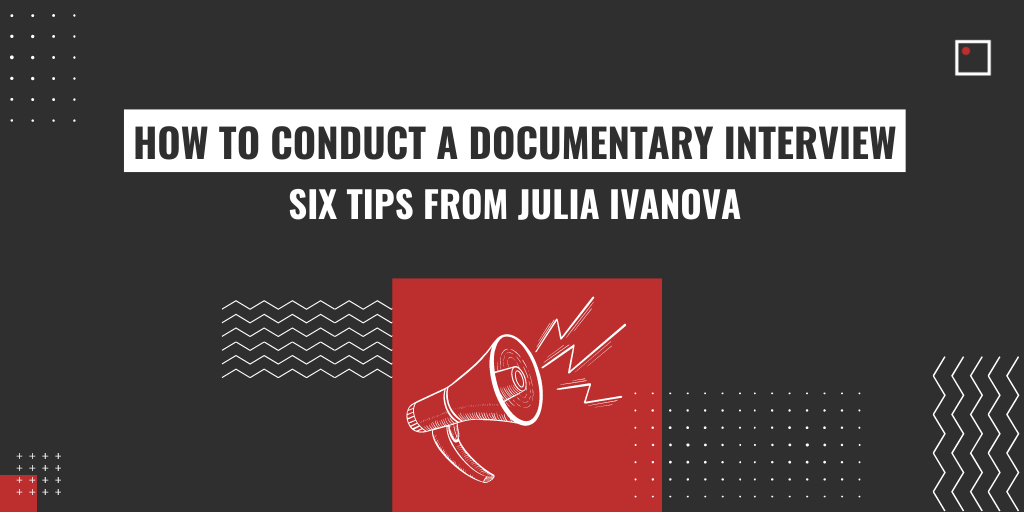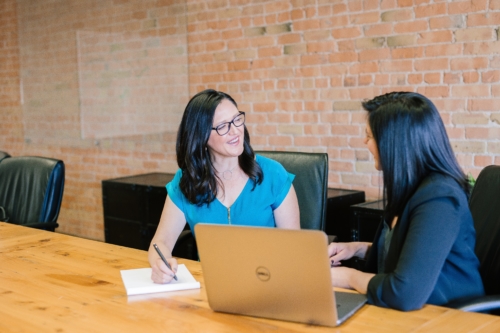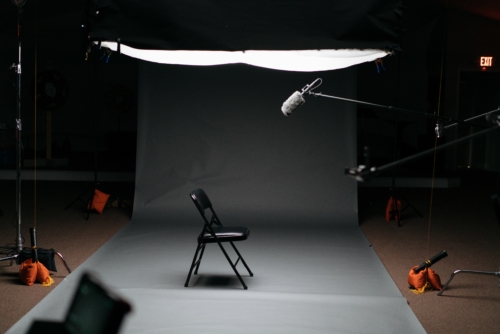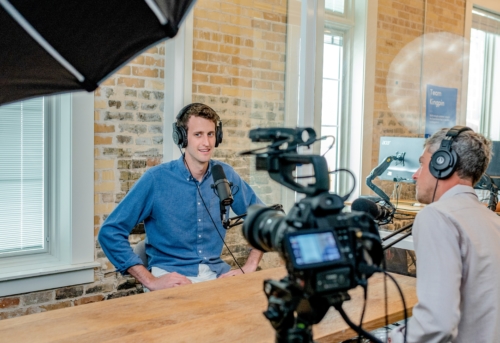Looking to get started in graphic design? Check out 10 tips on how to get the ball rolling.
By: Carmen DeCampo
Graphic design is a very popular field, and it’s expanding year upon year. The combination of creativity, communication skills, and knowledge of current trends appeals to those who thrive on challenges.
However, getting your foot in the door can be tricky.
There are many methods to make this process easier. We’ve put together a short guide to give you a leg up into the industry and get started in graphic design. 
1. Do Your Research Before You Get Started in Graphic Design
Becoming a graphic designer takes a lot of hard work, along with loads of creativity and passion. Before committing to a career, it’s important to do some research so you know what you’re getting into.
There are many people who initially choose a career path focused on something they enjoy doing. However, they may end up unhappy as their interest/hobby transforms from pleasure to pressure.
If you love art and design, graphic design may be the perfect choice. It’s advisable, nonetheless, to take your time before making any concrete decisions. 
2. Choose The Right Course
It’s very difficult to get your foot in the door in any career without some sort of formal qualification. There are thousands of courses to choose from with graphic design—online and offline.
Some people can break into the industry without having studied design, but they are few and far between. That’s not to say experience isn’t important, but it’s a lot easier to get started with a solid grounding in theory and principles.
Doing a course that combines theory with practical experience is an excellent way to get started in graphic design. Understanding theory and putting it into practice are fundamental steps in pursuing a career in design.
3. Nurture Your Creativity
It goes without saying that to excel in any artistic field requires creativity. Design is leaning towards the digital realm. The field is beginning to emphasize skills like web design, UX and UI design (User Experience and User Interface), and online marketing.
When you’re getting started, practicing your creativity in all these fields is essential.
4. Get To Grips With Software
As we mentioned, graphic design has shifted towards digital media. Thus, a thorough understanding of design software is essential for newcomers to the industry.
Even more important than understanding, though, is the ability to use that knowledge in growing your creative skill-set. Getting started as a graphic designer isn’t easy. While knowledge of software is good, experience and curiosity are valuable beyond comparison.
A graphic design course and/or qualification is often the best path when it comes to combining theoretical knowledge with practical skills in software like Adobe Illustrator, InDesign and Photoshop.
5. Learn Design Principles – Observe And Practice
Whether you pursue a formal qualification or plan on teaching yourself, having a comprehensive knowledge of design principles is a prerequisite.
Look at the work of other designers for inspiration and then decide why they appeal to you. The best way to understand concepts like space, color, and balance is to see how they work in practice. You need to know what role images and visuals play, how text and font set a tone, and how color use influences emotions and evokes a response.
Analyzing a design you like can make it evident how the use of different elements evokes different feelings and reactions. Understanding the application of theory is what helps a designer develop and perfect their own style. Knowing what works, why it works, and how to use it creatively is crucial.
6. Self-Brand As A Freelancer
If you’re just starting out in graphic design, you’ll most likely find yourself facing many decisions: where to study (or whether to study at all), what specialization to pursue and more.
Research has shown that the vast majority—around 90%—of graphic designers work as freelancers. Therefore, every new entrant into the industry is facing fierce competition.
It’s never too early to start building yourself up as a professional with your own brand and style.
Looking at others’ work for inspiration only goes so far. Perfecting your own creative approach is what will ultimately make you a sought-after design professional. Apart from that, starting to freelance early is a great way to gain experience and add to your portfolio.
7. Build A Portfolio
Having a portfolio is a must for anyone working in creative industries.
For a graphic designer in the 2020s, a portfolio must include work that demonstrates a high level of skill and a thorough understanding of design principles. As we mentioned earlier: building an impressive portfolio begins early in a designer’s career. You can bolster your portfolio with any and every freelance assignment you complete.
Even if you have yet to finish your studies, laying the foundations of your career is something that you must give attention to. The keystone of which is your portfolio. It is important to you put yourself “out there” as a designer. Every job will depend on convincing potential clients that you have the knowledge, talent, and creative flair to deliver what they’re after.
8. Seek Out And Welcome Feedback
Not many people who enjoy being criticized. However, there are some careers in which taking feedback is a prerequisite.
Graphic design is, undoubtedly, one of them.
Success as a designer, therefore, requires a thick skin and the open-mindedness to see your own weak spots. As well, a desire to put in the necessary effort to improve them.
9. Gain Experience – Any Experience
The unfortunate reality is that almost everyone only wants to employ people with experience. Alas, this may leave younger designers between a rock and a hard place.
How do you get experience when nobody wants to hire someone without it?
This might mean doing some design projects for NPOs which, unfortunately, are not financially profitable but look great on your resume.
10. Learn To Communicate And Collaborate
Your ability to make connections with people is a skill necessary to get started in graphic design. Although graphic design involves a lot of creativity and individual effort, carving out a career in the field demands the ability to communicate and collaborate with all sorts of people.
Working for clients and working with clients are an integral part of the design field. As soon as you start focusing on graphic design, it is wise to start to practice networking and seek out clients.
It isn’t easy to get started in graphic design, but it is rewarding. Especially if you’re following your passion.
Related Articles:
InFocus Graphic Design Program
How to Become a Freelance Graphic Designer

